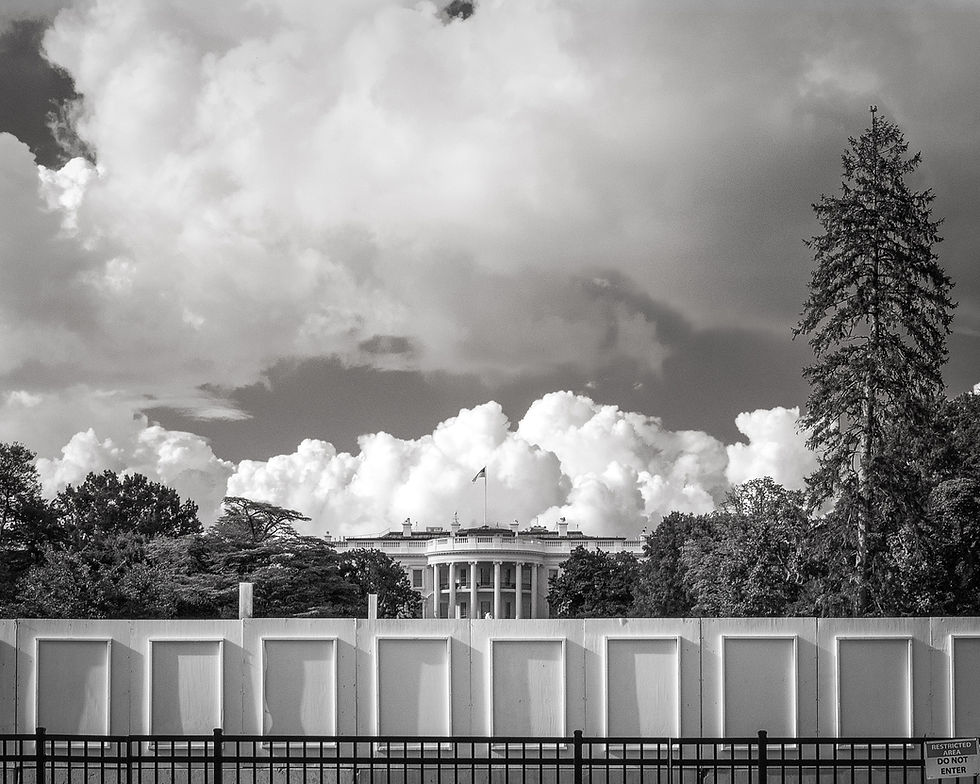- Nov 9, 2020
- 8 min read
Coming Next: Four Years of Federally-Led Climate Action

The climate is changing, that fact is undeniable. What we do about it, is highly reliant on politics – it is what it is. In 2020, the political elephant in the room at home in the US has been the Presidential election. Environmentalists and energy professionals everywhere have been holding their breath for the past 4 years, wondering how the President’s environmental agenda, or lack thereof, would have lasting impacts on the planet and its people. The Trump administration’s climate action has been defined by rolling back environmental protections and dismantling, or at least not progressing incentives for transitioning the economy to a clean one. Oh, and 1 trillion trees.
I’m pleased today to reflect on the relief that’s coming – a US leader who understands that irreparable damage to the world’s ecosystems is imminent understands humans’ role in that and has an aggressive, yet realistic and far-reaching plan that benefits all Americans.
First, let’s see where we are starting from.
2016 - 2020
The last 4 years haven’t been all negative when it comes to a clean energy economy. Despite inaction and setbacks at the federal level, local action and market movement has been stronger than ever. Cities and states have set aggressive climate goals, many that exceed those set by the Paris Climate Agreement. IRENA (International Renewable Energy Agency) stated that renewables beat out fossil fuels as the cheapest form of energy in 2019. Progress is happening and the proof has emerged that a clean energy economy makes perfect sense, despite what the politicians are saying.
BIDEN’S PLAN
Biden, a self-proclaimed “climate change pioneer,” has multiple webpages dedicated to his climate plan. Here’s the headline: Economy-wide net-zero emissions by 2050, millions of good jobs, and environmental justice considerations. The plan is comprehensive and centered around 5 points:
Ensure the U.S. achieves a 100% clean energy economy and net-zero emissions no later than 2050. Lead with an historic investment in clean energy, mechanisms and enforcement, and quick action. This includes cutting emissions from the building sector in half by 2035.
Build a stronger more resilient nation. Invest in smart infrastructure that updates aging systems and improves our ability to withstand climate change. Biden’s plan is to Build Back Better.
Rally the rest of the world to meet the threat of climate change. Recommit to the Paris Agreement and lead by example to bring other nations on board with meaningful action.
Stand up to the abuse of power by polluters who disproportionately harm communities of color and low-income communities. Consider those who typically don’t have the power to raise their voices loud enough. He will make sure that climate action benefits all people without giving preferential treatment to those who can control it with NIMBYism.
Fulfill our obligation to workers and communities who powered our industrial revolution and subsequent decades of economic growth. Reach to the past to acknowledge and reward those that have dedicated their lives and careers to fossil energy as he transitions the economy to a clean one. Those communities will not be forgotten or left in the past.
These kick-off his 10,000+ word plan, which goes more into the how. It highlights action items in infrastructure, the auto industry, public transit, the power sector, buildings, housing, technology innovation, agriculture and land conservation, and environmental justice.
It is a lot to absorb so I’ll highlight how the building sector will be affected. Emissions from buildings will be cut in half by 2035 through building retrofits with efficient LED lighting, electric appliances, advanced heating and cooling (this includes geothermal energy), and weatherization. New buildings will be built to operate with net-zero emissions. Strong incentives will come into play to facilitate the adoption of these changes. All of this will occur with skilled labor and will create millions of good jobs as we transition to a new, stronger, less polluting economy.
Many of Biden’s tactics are adopted from state-level clean energy best practices that have popped up in the past 4 years. Some of these municipalities are one step ahead with carbon neutrality milestones set for a decade sooner. Imagine what will be achieved with the united front that will start to take form. This federal-level strategy will be a gamechanger because it not only brings other regional and local municipalities along on the climate action train but addresses tangential and critical issues such as environmental justice and an increase in good jobs. The word ‘sustainability’ in Joe Biden’s plan multitasks to describe the planet and the economy – a distinction that I believe is necessary for success.
Here’s to hoping that 2021 will not be defined by a global pandemic and its ambush on society but rather the creation of a sustainable society, in all meanings of the phrase. Now let’s go make it happen.
Eileen Quigley is Director, Client Sustainability at Brightcore. She contributes to our sustainability blog, where we share insights on clean energy solutions for your business or institution, whether you have a fully formed corporate social responsibility plan or you are just starting to consider a renewable energy or energy efficiency strategy. Follow Eileen (@EcoQuig) and Brightcore (@BCEnergy) on Twitter.


